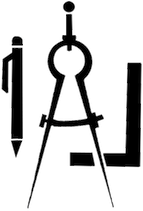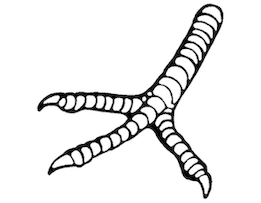The left brain interpreter
A few months ago I read Homo Deus by Yuval Noah Harari, the sequel of the widely acclaimed Sapiens, which I discussed in a previous post. Where Sapiens is about Humanity’s past, Homo Deus is about its future. Sapiens is a book whose main themes and ideas are derived from the analysis of historical data and facts. Its sequel relied mainly on Harari’s personal vision of the future. I didn’t connect with Homo Deus nearly as much as I did with Sapiens, and I would put the two books on different levels in terms of quality and impact. However, Homo Deus does contain some pretty mind blowing segments, especially when it touches the subjects of free will and consciousness. I’ve always been fascinated by these topics, and this book introduced me to some scientific material that left me astonished and, to be perfectly honest, a little bit depressed.
Brain facts
Before getting to the gist of the scientifical studies, let’s talk a little bit about the two brain hemispheres.
It is a widely known fact that the brain has two hemispheres: left and right. However, much of the popular preconceptions about the analytical, logical left brain VS the creative, artistic right brain are pretty much urban myths. They are derived from a rather distorted interpretation of the various studies that were carried on the subject. Here’s what Science does say about the brain’s hemispheres.

1. Each brain hemisphere controls the opposite part the body
The right hemisphere controls and receives data from the left side of the body. This means for instance that your left eye sends information to your right brain hemisphere, and your right brain hemisphere is responsible for moving your left arm and left leg. Symmetrically, your left brain is responsible for the right-hand part of your body. This is why people who had a stroke in their right hemisphere sometimes ignore the left side of their body (like combing hair only on the right side of their head), or in some cases get the entire left side of their body paralysed.
2. There are some emotional and cognitive differences between the two hemispheres
Even if the cognitive division between the two hemispheres is not nearly as clear-cut as what a lot of people believe, there are some proven cognitive and emotional differences between the two sides. The left hemisphere for instance, plays a more prominent role in speech and logical reasoning, while the right hemisphere is more dominant in processing spatial information.
The two hemispheres are linked together with a thick neural cable. Many breakthrough in understanding the relations between the two hemispheres of the brain were made by observing patients on who that link was surgically severed. I know that sounds a little horrific, but this operation, called Corpus Callosotomy, is actually commonly performed throughout the world, and usually successfully, to treat the most severe cases of epilepsy. When an epileptic person undergoes a seizure, electrical storms begin in one part of the brain and quickly propagate to other parts, causing important convulsions and/or loss of consciousness. Cutting the cable connecting the two hemispheres is a way to prevent the electrical storm from spreading from one part of the brain to the other.
People who underwent such a procedure are often referred to as “split-brain” patients, and some of them have been the subject of scientific research in order to better understand the human brain. These studies are where most of what’s currently known about the two brain hemispheres comes from.
A tale of two brains
The most notable studies on split-brain patients were conducted by researcher Roger Sperry and his PhD student michael Gazzaniga. The subjects who participated in Sperry and Gazzaniga’s studies were all patients whose personality, intelligence and emotions had remained apparently unaffected by the Corpus Callosotomy operation. Here is a compilation of some experiments that were conducted as part of these studies, and their bizarre outcome.
Patient A: The uncooperative hands
One eerie behaviour sometimes found in split-brain patients is the alien hand syndrome. It was displayed in this study by a patient whose hands seemed to each have a mind of their own. Since the two hemispheres of the patient were not connected anymore, they occasionally could not coordinate the movements of the two hands towards one single action. Sometimes the patient would reach out to open a door with his right hand because his left brain instructed him so, but at the same time the left hand would slam the door shut. Spooky…
Patient B: The boy with conflicting ambitions
Another experiment involved a teenage boy. The boy was asked what he would like to do when he grows up and he answered that he would like to be a draughtsman (a person who makes detailed technical plans or drawings). Remember that speech is controlled by the left brain, this answer was therefore provided by the left part of his brain. If the right hemisphere can’t control vocal language, it can still communicate through movement. The researchers presented the same question to the boy, this time writing it down on a piece paper that they presented to his left visual field (leading to the question being processed by the boy’s right hemisphere). Since the right hemisphere can’t control vocal speech, they asked the boy to use scrabble tiles to spell out his answer. The boy quickly arranged the tiles to form the word “automobile race”.
Wow… The two hemispheres of this boy’s brain had different ideas about his future career, and since the connection between them was severed, they could not “agree” on a single answer, and they each went their own way.
Draughtsman VS car race pilot


Patient C: Snow and feathers
In yet another disturbing experiment, Gazzaniga presented a patient with two pictures, flashed simultaneously in a way that each of them would be seen and processed by opposite sides of the brain. The left visual field of the brain was shown a picture of a winter house and snowy landscape, while the right visual field was presented with the photo of a chicken claw. When asked what he saw, the patient answered “a chicken claw”, which is expected since it is the picture that was presented to the brain hemisphere that controls speech. Then, Gazzaniga presented the patient with a series of pictures and cards and asked him to point to the items that best described what he saw. The patient’s right hand, controlled by his left brain, pointed to a picture of a chicken, but simultaneously his left hand (controlled by his right brain) pointed to a snow shovel.
At this point Gazzaniga asked the obvious question: “Why did you point both to the chicken and the snow shovel?”. To which the patient replied most naturally: “Oh the chicken claw goes with the chicken, and you need a shovel to clean out the chicken shed”.
Let that sink in for a moment… We have a patient who experienced two contradicting sensory information. At a given time, the patient’s brain processed two different pictures, while the patient was under the impression that only one picture was being processed. Each part of the patient’s brain correctly identified the picture that was presented to it and was able to relate it to other entities, but neither part of the brain had any data about what the other part had seen. So when the patient’s left brain, who controls speech, was confronted with the fact that the right brain was pointing at wintery stuff instead of poultry stuff, rather than accepting that something was amiss, the left brain immediately rationalised this with some made up excuse that would serve as an explanation.
Chicken claw or winter house?


Patient D: A naughty machine
In an experience similar to the previous one, the non verbal right hemisphere of a patient was presented with a pornographic image. The patient reacted by blushing and giggling. When she was asked what she saw, the patient said “Nothing, just a flash of light”, which is indeed all that her left brain “saw”. When asked why she was laughing, the patient replied that one of the machines in the room was funny.
What happened here is the same “rationalising” process that happened with the chicken/winter house experiment. The left brain of the patient didn’t know why the patient was laughing so it just invented something credible.
The stories we tell ourselves
What do these four experiments tell us? That the left hemisphere of the brain is not only the seat of our verbal abilities but also of an “internal interpreter” that constantly tries to make sense of our life, using partial clues to provide explanations about what we experience. The left brain interpreter “holds the story together”, it reconciles the past with the present, plans the immediate and distant future, and provide a sense of continuity in our lives.
The patient B experiment is interesting because it hints at the idea that our left brain interpreter is acting a censor on our own ideas and projects. Planning to be a draughtsman is a more realistic and down-to-earth project than becoming a Formula 1 pilot. This raises the question: how much of our instincts and ideas get censored by our left brain? What else would our right brain have to say if we isolated it from the left brain influence?
The experiments with patient C and D display how quickly and instinctively the left brain interpreter operates. When confronted to a behaviour that doesn’t make sense, the left brain immediately created a plausible story that explains it. What I find particularly amazing with these two experiences is that all of this happened subconsciously. The researchers had no reason to think that the patients were deliberately making up lies (why would they?), which means we have two persons who are under the impression that they are answering honestly, but are actually making false claims about what they experienced and why they acted the way they did. As far as they are concerned, the chicken shed needs a shovel and the machine was funny. The stories that their left brain interpreter invented are their own personal truth.
It’s pretty easy to draw parallel with human behaviour at scale. Individuals and communities are constantly crafting stories to reinforce the narrative of their own existence and value system. They find compelling justifications for the things that they do and the things that happen to them. It is almost physically impossible for us, human beings, to accept that some of the things we experience are devoid of meaning or just in plain contradiction with our own beliefs. We need to fill all the blanks, find a meaning to every story, even when we don’t have all the necessary data (or sometimes any data) to make such judgements. At the individual level, one person will create a narrative that justify their choice of lifestyle and values. Their “left brain interpreter” will give more weight to the experiences that reinforce the validity of the choices they make, and give less weight to whatever make them appear less meaningful.
The left brain interpreter is probably a crucial element for human survival. Without it, we would be left constantly confused about the state of the world. Probably left in a permanent existential crisis. But the cost we pay for this survival tool is also pretty high: it makes us presumptuous and assuming, and it’s probably the root for much of the misunderstanding that exist between humans on the cultural, moral and social levels. It’s also worth reinforcing that everyone has a left brain interpreter, and whether it leads to someone being a liberal, a religious extremist, a human right activist, a drug lord or the average Joe, they are subject to some degree to their own left brain interpreter’s narrative.
Final thoughts
I have to admit that reading about these studies, however fascinating they are, made me feel a bit down. Even if I was familiar with the concept of confirmation bias, I hadn’t realised that it was ingrained so deeply into our biology. It’s a bit hard, after reading this, to have any opinion about anything. Even when you try to stick to facts and data, how much of your judgement is distorted by your left brain interpreter? How much of the stuff that motivate and inspire you is just your left brain tricking you into finding a purpose for living your life?
Alright, this is getting a bit too deep. Maybe I should go back to reading Introduction to Algorithms.